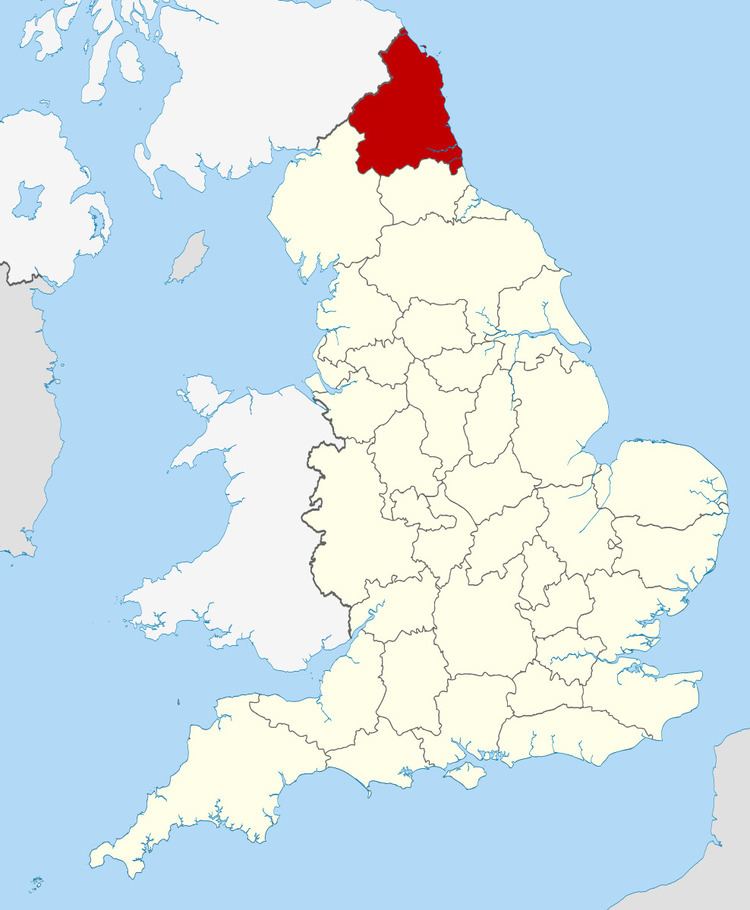Formed 1974 Population 1,420,400 | Size 5,551 km² | |
 | ||
Legal personality Non government: Police force General nature Law enforcementCivilian agency | ||
Northumbria Police is the territorial police force responsible for policing the areas of Northumberland and Tyne and Wear in North East England.
Contents
Organisation
Northumbria Police is the sixth largest police force in England and Wales with 3,486 police officers, 1,505 police staff, 245 special constables and 200 police community support officers (as at 1 June 2015). The force headquarters are located at Middle Engine lane in Wallsend, North Tyneside. However, significant numbers of functions have been dispersed to various locations throughout the force area as part of plans to reduce costs, with the stated intention of operating without a traditional headquarters function. The current Chief Constable is Steve Ashman, whose appointment by Northumbria Police and Crime Commissioner Vera Baird became effective on 4 June 2015. Former chief constables include Sir Stanley Bailey (1975–1991); John Stevens, Baron Stevens of Kirkwhelpington (1991–1996); Crispian Strachan CBE (1998–2005), Mike Craik (2005–2010) and Sue Sim (2010-2015, including a period as temporary chief constable).
Northumbria is Home Office force 10.
History
The force was formed in 1974 and was a merger of the old Northumberland Constabulary along with part of the Durham Constabulary. The police forces for the county boroughs of South Shields, Gateshead, Sunderland Borough Newcastle upon Tyne City Police and Tynemouth Borough had already been amalgamated into their respective forces in the late 1960s, with the Berwick-upon-Tweed police having been merged into Northumberland in 1921.
Under proposals made by the Home Secretary on 6 February 2006, Northumbria was to merge with Cleveland Police and Durham Constabulary to form a single strategic police force for North East England. Both Northumbria and Durham favoured this proposal, while Cleveland expressed a wish that it be merged with the southern area of the Durham force. All proposals regarding force mergers were subsequently dropped nationwide.
In July 2010, Raoul Moat targeted Northumbria Police officers after his release from Durham Prison. A manhunt was started by Northumbria Police with assistance from Durham Constabulary, Cleveland Police, Cumbria Police, West Yorkshire Police, South Yorkshire Police, and Humberside Police. As the situation developed over a period of days, more support was made available with the Metropolitan Police sending 40 firearms officers, most specialised in the use of sniper rifles. Also, the Police Service of Northern Ireland sent 20 armoured Mitsubishi Shoguns to help in the search on rough terrain in Northumberland.
In April 2014, Northumbria Police came under controversy when they threatened teenagers with an ASBO for building a den out of sticks in the woods.
In May 2016, details emerged of an affair between former Chief Constable Mike Craik and then Assistant Chief Constable Carolyn Peacock. Peacock's husband - also then a serving police officer - found out about the affair at a barbecue, and attacked Craik. Officers from Northumbria Police were called to the incident, which was later removed from all police logs on order of the Chief Constable, and legally banned from reporting in the courts. The legal bans were lifted, after the former Head of Legal sued the force for unfair dismissal.
Chief Officer team
Divisional structure
Northumbria Police is divided into three Area Commands. The number of police stations is in the process of being rationalised as part of significant ongoing budget reductions.
Neighbourhood policing
Northumbria Police has numerous teams dedicated to neighbourhood policing attached to the area commands as the table below outlines. A number of these teams are now based within community hubs rather than traditional police stations.
Communications
There are two inter-operable communication centres:
Officers killed in the line of duty
The Police Memorial Trust lists and commemorates all British police officers killed in the line of duty, and since its establishment in 1984 has erected over 38 memorials to some of those officers.
Since 1900, the following officers of Northumbria Police and its predecessors are listed by the Trust as having been killed while attempting to prevent, stop or solve a criminal act:
